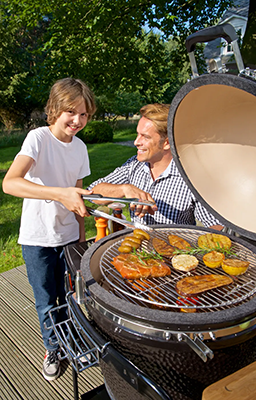What does core temperature mean?

When we start cooking food, the outside of it is exposed to more heat than the inside (the core). So that outside is cooked earlier. Sometimes that can be fine, such as with a steak. In other cases, we want the core to be (fully) cooked as well. Not only to make it more tender and taste better, but also because in many cases eating food that has not been cooked enough is very unhealthy. This is because it may contain bacteria, viruses, fungi or parasites that cause food poisoning.
The thinner a piece of food, the sooner the insides will also be sufficiently cooked. We are usually talking about minutes. The larger a piece of food, the longer it takes to cook the inside properly as well. This can sometimes take hours because the heat source is tempered (to keep the outside from burning).
You can often reasonably estimate, based on experience, how long the cooking process will take, but on a barbecue it is a little trickier. The temperature is less easy to regulate (and sometimes not constant) and not infrequently (especially with indirect grilling and smoking) very large and/or less familiar types of food are prepared. The key then is to measure the core temperature. This is very easy to do with a special core thermometer (see previous post, among others). Of course, you then need to know what core temperature you wish to achieve. You can look them up in the tables below. Where temperatures are not listed, particularly under rare and medium rare, it is not wise from a health standpoint to pursue that degree of cooking. For some types of meat, only a temperature below well done is listed. These should always be cooked through and through. If no temperature is listed under well done, then it was done based on taste. For example, a salmon that has been cooked too long becomes gooey and is not tasty.













